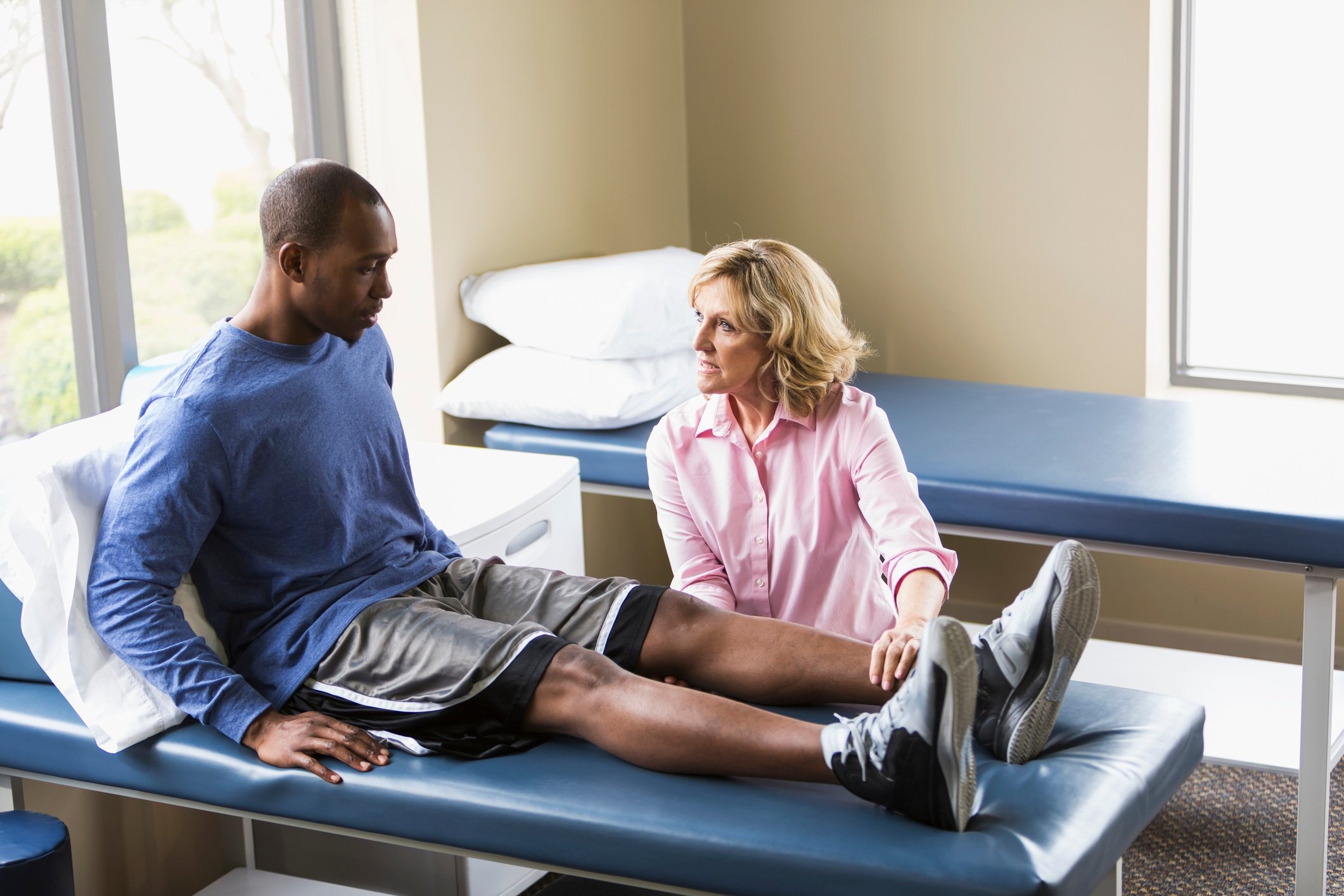Today’s young athletes work harder, longer hours, and push through injury more than ever before.
Traveling sports start at a younger age, which usually means more practices per week and tournaments multiple weekends per month. Tee ball starts by age 4. Travel baseball and football begins by age 8. Kids committing to one sport, also called specializing, is seen by middle school.
According to a recent study, athletes who specialize at a younger age are injured more often. Whether or not you agree with this practice, the fact is, it’s happening all over the country. Chiropractic medicine has a real niche in this environment as well as the knowledge base to treat these kinds of athletes.
In this post, we will discuss four ways that chiropractic medicine can provide long-lasting benefits to young athletes.
1. Chiropractic treatments can decrease recovery time.
Normal wear and tear occurs often to a healthy athlete’s body. A baseball pitcher uses a repetitive throwing motion. A volleyball player jumps, repeatedly blocking and hitting. A football player takes multiple body blows during a single game. At some point during a season, usually multiple times, an athlete experiences muscle fatigue and soreness. There are usually only one to two days between practices/games, and at times athletes need more than rest to get them game-ready.
After practice or game, a chiropractic physician may utilize soft tissue techniques such as massage or instrument assisted soft tissue techniques to make the tissue more moveable and relaxed, decrease lactic acid, and improve blood flow. Physiotherapy equipment such as ultrasound or cold laser may be utilized to help with areas that have exceptionally high inflammation. An adjustment may be provided to improve joint mobility. Recommendations for rehydrating properly and dietary adjustments to assist with athletic recovery may also be discussed.
Combining these options or others not discussed above, based off the chiropractic physician’s expertise, will help athletes recover and be better prepared for the next practice or game.
2. Chiropractic treatments can assist in injury repair.
Each sport has body areas that are more prone to injury due to the stress the sport puts on the area. According to the American Orthopedic Society for Sports Medicine, dancers most commonly experience leg injuries, golfers experience arm injuries, lacrosse players experience knee issues and muscular strains — the list of sports injuries go on through each youth sport.
Once an injury occurs, the athlete and family often want to return to their sport as quickly as possible. Many of these techniques discussed earlier can be modified by intensity and duration to assist in injury repair.
Adjusting joint segments that are no longer moving can enhance mechanical motion. Soft tissue techniques will improve muscle tone and blood flow to injured areas as well as decrease adhesions or build up around injured areas. Ultrasound and cold laser, among other therapy options, can significantly reduce inflammation and pain levels felt by the athlete. In addition, Kinesio Taping can provide support and certain taping techniques can assist in blood flow to the injured area.
Most importantly, chiropractic physicians are trained to understand anatomical and physiological response to movement patterns, as well as optimal treatment options. It is imperative that the athlete’s doctor has an intimate understanding of injury repair, as well as proper guidelines for safely returning the athlete to his or her sport.
3. Chiropractic treatments can lead to optimal wellness.
Taking care of an athlete’s body should not begin the first day of practice or after the first tournament of the season. Athletes should focus on body awareness, health, and optimal function year round.
A chiropractic physician can assist an athlete in proper diet and nutrition, sleep guidelines, as well as proper training strategies that should be utilized as a life-long habit. Proper spinal and extremity alignment through adjustments, body mechanic evaluation, and gait analysis can assist with muscular patterns and development that are essential in a developing youth athlete. By continually keeping an athlete’s body in his or her healthiest form, he or she will train more efficiently and effectively year round.
4. Chiropractic medicine plays a vital role in supporting the athlete as a whole.
With youth athletes training year round and specializing at a younger age, there should be a team in place to assist the athlete in being the best he or she can be. Although youth sports do not have a formal medical team established like college or professional sports teams, a youth athlete should have a support team that is entrusted with the care of the athlete.
For example, a trainer helps with muscle development and ligament/tendon stability, while the coach teaches the young athlete how to play a sport and develop a love for the game. A chiropractic physician, on the other hand, plays a vital role in facilitating whole body wellness. Before beginning a sport, the child’s physician should complete a thorough physical exam to ensure the child is healthy enough to participate in the activity. Some states allow the primary care physician to be a chiropractor. Other states have differing guidelines. Check your state for specific requirements.
Parents are another important part of a young athlete’s support team, and must monitor overuse, over-activity, and over-training. They must also make sure the athlete’s physicians, coaches, and trainers are current on the health of the athlete and are constantly working in unison.
If you’re interested in learning more about how to become a chiropractor and about chiropractic medicine in general, we invite you to visit our website for more info!
If you’re interested in learning more about chiropractic medicine and it’s many benefits or information on becoming a chiropractic physician, I invite you to stay up-to-date with our weekly blog, The Future of Integrative Health.
{{cta(‘54762f23-a3a9-444b-b22b-8653e8f9b3a4’)}}



